Accidental Hazards
Hazardous Material (Chemical, Radiological, Biological) Spill or Release
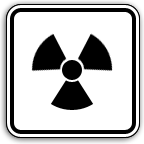 Hazardous materials exist everywhere in daily life and the workplace. Hazmat spills or releases can cause death and a wide array of injuries and illnesses, some of which can take years to develop. Hazmat accidents can occur during production, storage, transportation, use, or disposal of hazardous materials. Hazmat spills and releases can contaminate everything in the local area including ground water, air, plants, animals, and food resources. They can cause fires, disrupt general mobility, and require people to evacuate the local area. Often, hazardous materials cannot be detected by smell, taste, or any other human senses and contamination may be difficult to ascertain without the proper testing equipment and knowledge of the hazards properties.
Hazardous materials exist everywhere in daily life and the workplace. Hazmat spills or releases can cause death and a wide array of injuries and illnesses, some of which can take years to develop. Hazmat accidents can occur during production, storage, transportation, use, or disposal of hazardous materials. Hazmat spills and releases can contaminate everything in the local area including ground water, air, plants, animals, and food resources. They can cause fires, disrupt general mobility, and require people to evacuate the local area. Often, hazardous materials cannot be detected by smell, taste, or any other human senses and contamination may be difficult to ascertain without the proper testing equipment and knowledge of the hazards properties.
Mitigation of hazardous material spills and releases:
- Have backup facilities in place and away from the local area, preferably upstream, uphill, and upwind of the primary facility
- Facilities should have well sealed access points to contain or repel hazmat spills and releases
- Procedures for the safe production, storage, transportation, use, and disposal of hazardous materials that the company has on site should be implemented
- Mitigation procedures for hazardous materials used by nearby persons or companies should exist
- Be aware of alert procedures if nuclear power facilities are in the area.
Explosion / Fire
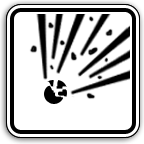 Explosions or fire can be caused by a variety of sources including: hazmat spills or releases, lightning strikes, catastrophic events that disrupt gas lines or fuel storages, and intentional human caused events. Explosions and fires can destroy structures, equipment, and cause great injury or death and they can cause hazardous materials releases.
Explosions or fire can be caused by a variety of sources including: hazmat spills or releases, lightning strikes, catastrophic events that disrupt gas lines or fuel storages, and intentional human caused events. Explosions and fires can destroy structures, equipment, and cause great injury or death and they can cause hazardous materials releases.
Mitigation of explosive and fire hazards:
- Store explosive and hazardous materials safely and securely, with access by trained personnel only
- Training in processes and procedures that involve explosive and flammable materials, and electrical systems should be done
- Automatic sprinkler, fire suppression, and evacuation equipment, procedures, and training should be conducted
Transportation Accident
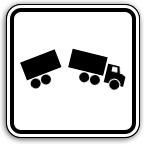 Transportation accidents include crashes of planes, trains, ships, trains, trucks, and automobiles. Such accidents can cause hazmat releases into the surrounding area or over a wide area (example: oil tanker spill). Transportation Accidents can cause injuries, fatalities, and disrupt mobility in or through the area. Similar vehicles can be grounded, recalled, or decrease in value if a specific failure (defective part) attributable to all the vehicles is found to have caused catastrophic accidents.
Transportation accidents include crashes of planes, trains, ships, trains, trucks, and automobiles. Such accidents can cause hazmat releases into the surrounding area or over a wide area (example: oil tanker spill). Transportation Accidents can cause injuries, fatalities, and disrupt mobility in or through the area. Similar vehicles can be grounded, recalled, or decrease in value if a specific failure (defective part) attributable to all the vehicles is found to have caused catastrophic accidents.
Mitigation of transportation accidents:
- Alternate transportation methods and routes should be established
- Vehicle maintenance should be conducted and monitored regularly, using approved parts, methods, and qualified personnel
- Driver or pilot training programs should meet regulatory requirements and include proficiency evaluations
Building / Structure Collapse
 Building and structure collapses usually happen suddenly and with devastating consequences. They can be caused by seismic activity, windstorms, precipitation, and design or construction defects. Collapses can result in injury and death, and destroy not only the building or structure, but the contents and surrounding assets.
Building and structure collapses usually happen suddenly and with devastating consequences. They can be caused by seismic activity, windstorms, precipitation, and design or construction defects. Collapses can result in injury and death, and destroy not only the building or structure, but the contents and surrounding assets.
Mitigation of building and other structure collapses:
- Facilities should be structurally designed, built, and utilize construction materials meeting regulatory requirements
- Construction materials and methods specifically designed to prevent collapse should be used in areas subject to seismic or storm hazards
Energy / Power / Utility Failure
 People and businesses rely increasingly on energy, power, and utilities as the use of computers, automation, and telecommunications increases. These services are essential and interruptions leave little way to process transactions, light facilities, or control traffic. Power disruptions can be caused by other hazards, and are unique in that they can also be caused by excessive demand put on the services. When power grids fail, blackouts or rolling (sporadic or induced) brownouts can occur. The lack of power or utility services can severely hamper the ability to deal with other hazards which is why backup power and communications systems are so prevalent in mitigating most hazards.
People and businesses rely increasingly on energy, power, and utilities as the use of computers, automation, and telecommunications increases. These services are essential and interruptions leave little way to process transactions, light facilities, or control traffic. Power disruptions can be caused by other hazards, and are unique in that they can also be caused by excessive demand put on the services. When power grids fail, blackouts or rolling (sporadic or induced) brownouts can occur. The lack of power or utility services can severely hamper the ability to deal with other hazards which is why backup power and communications systems are so prevalent in mitigating most hazards.
Mitigation of power failures:
- Financial and critical computers and process systems should utilize UPS (Uninterruptible Power Supplies), and emergency power generators
- Battery operated communications (cellular, radio) should be available
- Emergency shutoff and startup procedures for gas, water and electrical power should be established
Fuel / Resource Shortage
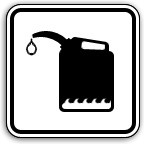 Civilization is built and run on the back of the carbon economy. The primary sources of carbon fuel are crude oil, natural gas, and coal. Oil is used to produce gasoline, diesel fuels, heating oil and industrial lubricants. The production of electricity is dependent in many areas on natural gas, and coal. Crude oil is also a feedstock for the production of plastics, and many other materials used in the production of goods, while natural gas is used to make fertilizers that are essential to high crop yields in agriculture. Resources also include minerals, wood and other materials used in the production of goods. Fuel and resource shortages cause economic slowdowns and inflation. Businesses, governments, and persons competing to get available resources causes price increases which in turn increases the price of the goods being manufactured, or transported. Those that can not compete effectively cannot earn a viable income and contribute to a slowdown in demand.
Civilization is built and run on the back of the carbon economy. The primary sources of carbon fuel are crude oil, natural gas, and coal. Oil is used to produce gasoline, diesel fuels, heating oil and industrial lubricants. The production of electricity is dependent in many areas on natural gas, and coal. Crude oil is also a feedstock for the production of plastics, and many other materials used in the production of goods, while natural gas is used to make fertilizers that are essential to high crop yields in agriculture. Resources also include minerals, wood and other materials used in the production of goods. Fuel and resource shortages cause economic slowdowns and inflation. Businesses, governments, and persons competing to get available resources causes price increases which in turn increases the price of the goods being manufactured, or transported. Those that can not compete effectively cannot earn a viable income and contribute to a slowdown in demand.
Mitigation of fuel and rescource shortages:
- Establish multiple and diverse sources for fuel and resources
- Establish strategic reserves and inventories for fuel and reserves
- Conservation measures for the use of fuel and resources should be implemented to limit exposure
- Contracts ensuring supply and price, with penalties for failing to meet these obligations should be designed
Air / Water Pollution, Contamination
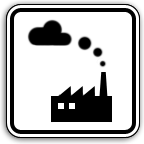 Pollution or contamination of air and water can have long lasting health consequences. Pollution is typically a widespread reduction in air or water quality caused over a length of time such as the effect of automobile exhaust on air quality or chemical byproducts released by industry processes. Contamination usually happens quickly by a large concentrated spill or release of toxic chemicals or materials in a local area. Pollution and contamination are generally the same as hazardous material spills or releases, and differ only in that they are not usually caused as the result of an accident, but are generally deemed to be the ecological cost of conducting business. Over time, pollution or concentrated contamination, can exact a cost that is too high too be justified by the benefits of conducting business in the manner that allows these hazards to occur.
Pollution or contamination of air and water can have long lasting health consequences. Pollution is typically a widespread reduction in air or water quality caused over a length of time such as the effect of automobile exhaust on air quality or chemical byproducts released by industry processes. Contamination usually happens quickly by a large concentrated spill or release of toxic chemicals or materials in a local area. Pollution and contamination are generally the same as hazardous material spills or releases, and differ only in that they are not usually caused as the result of an accident, but are generally deemed to be the ecological cost of conducting business. Over time, pollution or concentrated contamination, can exact a cost that is too high too be justified by the benefits of conducting business in the manner that allows these hazards to occur.
Mitigation of contamination hazards:
- Procedures for the safe production, storage, transportation, use, and disposal of hazardous materials that the company has on site should be implemented
- Mitigation procedures for hazardous materials used by nearby persons or companies should exist
- An environmental assessment of the facilities should be conducted
Water Control Structure / Dam / Levee Fail
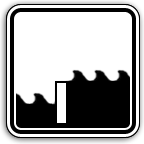 Water control structures hold back large reservoirs of water from following their natural course of flow. The failure of dams, levees, and other water control structures can cause sudden and costly damages due to severe flooding and be chronic in nature as floodwaters continue to flow until repairs can be made. Water control failures can be caused by inadequate engineering, increased water levels beyond the structures capabilities, and seismic events.
Water control structures hold back large reservoirs of water from following their natural course of flow. The failure of dams, levees, and other water control structures can cause sudden and costly damages due to severe flooding and be chronic in nature as floodwaters continue to flow until repairs can be made. Water control failures can be caused by inadequate engineering, increased water levels beyond the structures capabilities, and seismic events.
Mitigation of water control failures:
- Primary or alternate facilities away from floodplains, natural drainage systems such as rivers and valleys
- Elevated and reinforced construction of structures
- Elevate utility access points and electrical panels
- Install check-valves in sewer and water drains
- Construct levees or barriers to prevent floodwaters from entering property or structures
- Water control structures should be structurally designed, built, and utilize construction materials meeting regulatory requirements
- Excessive precipitation or accumulation of water held by the structure should be monitored and controlled release procedures established
Financial Issues, Economic Depression, Inflation, Financial System Collapse
 Financial and economic issues are more prevalent during times when financial markets, commodity prices, and interest rates are experiencing above average price fluctuation. Such fluctuations can cause increased debt servicing costs, lower margins from long term contracts at fixed prices, lessening consumer demand for products and services, or loss of savings due to collapsed or bankrupt institutions. Financial issues can also arise from mismanagement of finances or poor investment strategies.
Financial and economic issues are more prevalent during times when financial markets, commodity prices, and interest rates are experiencing above average price fluctuation. Such fluctuations can cause increased debt servicing costs, lower margins from long term contracts at fixed prices, lessening consumer demand for products and services, or loss of savings due to collapsed or bankrupt institutions. Financial issues can also arise from mismanagement of finances or poor investment strategies.
Mitigation of financial system hazards:
- Prepare a 5 year business plan with financial goals, objectives, and metrics
- Set rules and guidelines for investing excess cash that meets an acceptable risk tolerance
- Review local and global trends with forecasts for pricing of commonly purchased items and sales into the market
Communications Systems Interruption
 Communications systems allow command, coordination, transactions, and information sharing quickly, and over great distances. They enable decisions and actions to be executed expediently and are always a priority function. Telephone, mobile phone, radio, courier service, fax, email, and the internet are all part of daily communications systems. When interrupted, the ability to command, coordinate and perform transactions or share information is interrupted. This in turn can cause harm to persons relying on essential information, or trying to contact emergency responders. It can shut down a businesses ability to perform its most basic daily functions. Interruptions are caused by other hazards or by communications equipment failures.
Communications systems allow command, coordination, transactions, and information sharing quickly, and over great distances. They enable decisions and actions to be executed expediently and are always a priority function. Telephone, mobile phone, radio, courier service, fax, email, and the internet are all part of daily communications systems. When interrupted, the ability to command, coordinate and perform transactions or share information is interrupted. This in turn can cause harm to persons relying on essential information, or trying to contact emergency responders. It can shut down a businesses ability to perform its most basic daily functions. Interruptions are caused by other hazards or by communications equipment failures.
Mitigation of communications interruptions:
- Battery operated communications (cellular, radio) should be available
- Alternate communications systems should be compatible with responders communications systems
- Out of area check-in contact and procedures should be established to take and relay messages
Intentionally Caused Hazards
Terrorism (Conventional, Chemical, Radiological, Biological, Cyber)
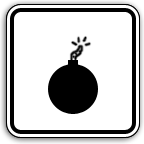 Terrorism is the systematic use of violence and guerilla warfare techniques against persons and property for the purpose of intimidation, coercion, ransom, extortion, and publicity for a cause. Terrorism uses a wide variety of weaponry such as conventional guns and bombs, chemical, biological, radiological, and cyber or computer systems attacks. Targets for terrorism include all the strategic targets of war as well as public gatherings and corporate centers. Targeting is frequently focused on causing death and injury rather than destruction of assets or resources.
Terrorism is the systematic use of violence and guerilla warfare techniques against persons and property for the purpose of intimidation, coercion, ransom, extortion, and publicity for a cause. Terrorism uses a wide variety of weaponry such as conventional guns and bombs, chemical, biological, radiological, and cyber or computer systems attacks. Targets for terrorism include all the strategic targets of war as well as public gatherings and corporate centers. Targeting is frequently focused on causing death and injury rather than destruction of assets or resources.
Mitigation of terrorism:
- Facility design should include perimeter and access controls to ensure only authorized persons can gain access to the facility, and only authorized vehicles can enter the surrounding perimeter
- Facility access points (doors, windows) should be well sealed and ventilation systems should have shutoff procedures to obstruct the intake of contaminated air
- Mail and unscheduled deliveries should be confined and controlled to limited areas
- Alternate facilities and management succession procedures should be established
- Computer data should have equipment and procedures for backup to alternate media (paper files, disk, tape) and safeguarding (firewalls, encryption, password access)
- Suspicious activity should be documented and reported
Sabotage
 Sabotage is a willful act of disruption or destruction that damages equipment or undermines the effectiveness of equipment or processes. Sabotage usually interrupts operations or degrades the quality of goods or products. Sabotage can be caused by disgruntled workers or persons from competing companies. Sabotage can result in interrupted operations, damaged equipment, negative perception of the company by customers, and even death or injury where critical processes or equipment is damaged.
Sabotage is a willful act of disruption or destruction that damages equipment or undermines the effectiveness of equipment or processes. Sabotage usually interrupts operations or degrades the quality of goods or products. Sabotage can be caused by disgruntled workers or persons from competing companies. Sabotage can result in interrupted operations, damaged equipment, negative perception of the company by customers, and even death or injury where critical processes or equipment is damaged.
Mitigation of sabotage:
- Background checks on prospective employees should include criminal and work histories
- Security systems should be used to monitor and safeguard sensitive areas
- Persons accessing sensitive areas should follow security protocols
- Quality control and inspection programs should be in place for products produced
- Suspicious activity by employees should be documented and reported
Civil Disturbance, Public Unrest, Mass Hysteria, Riot
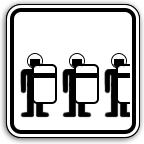 Civil disturbances are caused when large groups of people protest an issue or an incident in such a way as to interrupt normal activities. Interruption can occur as a result of impromptu public gatherings and speeches projecting negative sentiment, physical blockades of an area, vandalism, or violent clashes with persons or authorities. Disturbances are caused by failures in human rights, civil rights, justice, politics, and can happen due to passionate views of sporting or other major events. Most large disturbances have a small number of aggressive leaders or instigators, with the rest of the people involved taking advantage of escalating hysteria to vent frustration.
Civil disturbances are caused when large groups of people protest an issue or an incident in such a way as to interrupt normal activities. Interruption can occur as a result of impromptu public gatherings and speeches projecting negative sentiment, physical blockades of an area, vandalism, or violent clashes with persons or authorities. Disturbances are caused by failures in human rights, civil rights, justice, politics, and can happen due to passionate views of sporting or other major events. Most large disturbances have a small number of aggressive leaders or instigators, with the rest of the people involved taking advantage of escalating hysteria to vent frustration.
Mitigation of civil disturbances:
- Physical barriers and security systems including personnel should be adequate to protect facilities
- A general public relations program and community service program should be operating to provide information and involvement in the community
- An employee manual should document best practices for ethical and moral conduct, with procedures for personnel management including hiring and firing practices and dispute resolution
Enemy Attack, War
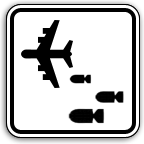 War is the act of armed conflict with an opposing military or civilian militia, or other competing entity. The intent of conflict is preemptive defense, leadership change, or as the result of international disputes or strategic objectives. While enemy attacks can occur sporadically or frequently for a limited time, full scale war will most often last for months or years. Wars and attacks cause a great deal of injury, death, incarceration of prisoners, and damage to assets, resources and the general infrastructure. Specific targets during war are military bases, political centers, utilities and communications services, industrial manufacturers, and fuel and supply stations. War can cause structural collapses, fires, and disease, as well as famines and resource shortages. The economic costs are substantial.
War is the act of armed conflict with an opposing military or civilian militia, or other competing entity. The intent of conflict is preemptive defense, leadership change, or as the result of international disputes or strategic objectives. While enemy attacks can occur sporadically or frequently for a limited time, full scale war will most often last for months or years. Wars and attacks cause a great deal of injury, death, incarceration of prisoners, and damage to assets, resources and the general infrastructure. Specific targets during war are military bases, political centers, utilities and communications services, industrial manufacturers, and fuel and supply stations. War can cause structural collapses, fires, and disease, as well as famines and resource shortages. The economic costs are substantial.
Mitigation of war hazards:
- Assess security, shelter-in-place and evacuation options for assets, resources, and personnel including the ramifications of a breakdown of utilities, communications, services and infrastructure during the exercise of various options
- Determine whether the facility or nearby locations might be strategic targets for an attack
Insurrection
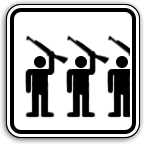 Insurrection is a rebellion, revolt, or uprising meant to seize control from those currently in charge. On a national scale this could be a political or military coup. Within a company, this could occur within the management staff or with the board of directors. Insurrections occur when leadership policies are failing, or when an opportunity of instability is seized by others wishing to take power. Insurrections can cause unrest and disturbances, as well as interrupting normal operations.
Insurrection is a rebellion, revolt, or uprising meant to seize control from those currently in charge. On a national scale this could be a political or military coup. Within a company, this could occur within the management staff or with the board of directors. Insurrections occur when leadership policies are failing, or when an opportunity of instability is seized by others wishing to take power. Insurrections can cause unrest and disturbances, as well as interrupting normal operations.
Mitigation of insurrection hazards:
- Explore the ramifications of significant changes to taxation, regulation, ownership, security and infrastructure that could occur with national leadership changes
- Policies for management succession should be documented and included in the articles, memorandum, or bylaws of the company
Strike
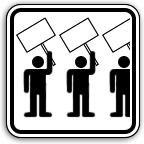 Labor strikes are organized groups of persons refusing to perform work duties in order to pressure management to better wages, benefits, or working conditions. Strikes can be legal or illegal, depending on applicable legislation, contracts, and the methods used to execute a strike. Strikes can often disrupt company operations and lead to some combination of negotiation, mediated bargaining, legal actions, increased labor costs, workforce changes, negative publicity and even insolvency depending on the situation.
Labor strikes are organized groups of persons refusing to perform work duties in order to pressure management to better wages, benefits, or working conditions. Strikes can be legal or illegal, depending on applicable legislation, contracts, and the methods used to execute a strike. Strikes can often disrupt company operations and lead to some combination of negotiation, mediated bargaining, legal actions, increased labor costs, workforce changes, negative publicity and even insolvency depending on the situation.
Mitigation of strikes and labor disputes:
- Employee training, support, and incentive programs should exist that promote team-building and address workers needs, while promoting motivation and excellence in the workplace
- Options and sources for alternate workers for critical functions should be explored
- Industry compensation trends should be explored
Misinformation
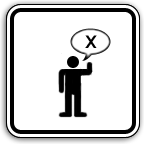 Misinformation can be false and misleading statements by employees, prospective employees, suppliers, or customers. It can be used in corporate espionage to lead negotiations or decision making in a direction that will negatively impact the company. The implications can be costly and have legal ramifications or generate negative publicity.
Misinformation can be false and misleading statements by employees, prospective employees, suppliers, or customers. It can be used in corporate espionage to lead negotiations or decision making in a direction that will negatively impact the company. The implications can be costly and have legal ramifications or generate negative publicity.
Mitigation of misinformation:
- A system for clearing and validating information or reporting discrepancies should be established
- Processes, procedures, and associated analytical data should be documented, monitored, and approved according to best practices for the industry, process or procedure
Crime
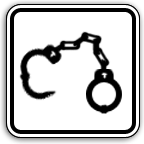 Common crimes are theft, vandalism, fraud, and assault. Less common crimes include kidnapping for ransom, extortion, embezzlement, and murder. Most crimes are motivated by profit except vandalism which is motivated by mischief or revenge and violent crimes which can be the result of extreme psychological conditions. Crimes can be perpetrated by individuals, small groups of people, or large organized groups. Crime can impact assets, resources, employee safety and morale, and proprietary information or trade secrets.
Common crimes are theft, vandalism, fraud, and assault. Less common crimes include kidnapping for ransom, extortion, embezzlement, and murder. Most crimes are motivated by profit except vandalism which is motivated by mischief or revenge and violent crimes which can be the result of extreme psychological conditions. Crimes can be perpetrated by individuals, small groups of people, or large organized groups. Crime can impact assets, resources, employee safety and morale, and proprietary information or trade secrets.
Mitigation of crime:
- A general security plan for facilities, assets, resources, and personnel should exist including personal, residential, and travel safety for key persons
- Suspicious activity or persons should be documented and reported
- Independent forensic accounting audits should be conducted periodically to detect criminal activity regarding finances
Arson
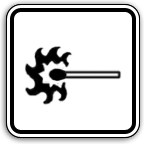 Arson is an intentionally started fire intended to destroy a building or its contents. Cases of arson are highly detectable in fire investigations and are motivated by revenge, mischief, insurance fraud, or to conceal evidence of other crimes. Arson poses a danger to all assets and resources and to persons that may be in the facility, or who may be responding to the incident. All the dangers of conventional fires exist.
Arson is an intentionally started fire intended to destroy a building or its contents. Cases of arson are highly detectable in fire investigations and are motivated by revenge, mischief, insurance fraud, or to conceal evidence of other crimes. Arson poses a danger to all assets and resources and to persons that may be in the facility, or who may be responding to the incident. All the dangers of conventional fires exist.
Mitigation of arson hazards:
- Facility design should include perimeter and access controls to ensure only authorized persons can gain access to the facility
- Automatic sprinkler, fire suppression, and evacuation equipment, procedures, and training should be conducted
Electromagnetic Pulse
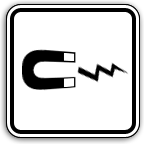 An EMP or electromagnetic pulse is a high density electrical field. An EMP can damage electronics such as communications equipment, computers, electrical appliances and vehicle ignition systems. An EMP can cause brief functional interruption or the physical burnout of components in the equipment. An EMP is caused by a nuclear blast.
An EMP or electromagnetic pulse is a high density electrical field. An EMP can damage electronics such as communications equipment, computers, electrical appliances and vehicle ignition systems. An EMP can cause brief functional interruption or the physical burnout of components in the equipment. An EMP is caused by a nuclear blast.
Mitigation of EMP hazards:
- Battery operated communications (cellular, radio) should be available
- Keep a maintenance inventory of backup electrical system and ignition components for critical transport vehicles
- Computer data should have equipment and procedures for backup to alternate media (paper files, disk, tape)
- Critical electrical systems and appliances should be shielded from electromagnetic radiation produced by an EMP
See also, Reference Guide: Natural Hazards